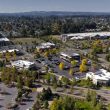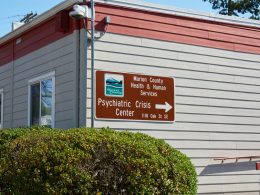Salem, OR – Salem residents are being asked to weigh in on how millions of federal dollars should be allocated to improve the area’s transportation infrastructure. The city’s transportation planners are considering a variety of potential projects, including road work, sidewalk extensions, and transit vehicle replacements. The decisions made could significantly shape how residents and visitors navigate the city for years to come.
One of the key proposals under consideration is extensive road work throughout Salem. Planners are eyeing several areas where improvements could alleviate congestion, repair aging infrastructure, and enhance overall traffic flow. Key projects could include resurfacing roads, upgrading intersections, and improving traffic signals.
Experts point out that such projects could improve safety for drivers and reduce travel times during peak hours. However, critics argue that focusing too heavily on road work might encourage more automobile use, potentially worsening air quality and traffic congestion in the long run. The debate raises an important question for city planners: how can they balance road improvements with the growing demand for sustainable, multi-modal transportation options?
In addition to road work, Salem planners are also considering funding sidewalk extensions in key areas across the city. Sidewalks are critical for ensuring pedestrian safety, particularly in neighborhoods near schools, parks, and public transit hubs. Extending sidewalks would not only make Salem more pedestrian-friendly but also provide safer routes for people with disabilities, children, and those who rely on walking for transportation.
While sidewalk extensions have clear benefits for pedestrians, some critics suggest that these projects may be slower to yield visible results. Additionally, the need for increased pedestrian infrastructure may vary depending on the neighborhood, with some areas already well-served while others are in more urgent need of attention. Planners will need to consider how best to prioritize these investments based on community needs.
Another major area of focus is the replacement of aging transit vehicles. Salem’s public transit system has long struggled with outdated buses, some of which are in dire need of replacement to ensure reliability and efficiency. With federal funds available, planners are looking at ways to upgrade the fleet, potentially incorporating electric or hybrid buses to reduce emissions and improve air quality.
Advocates for public transit are excited about the prospect of a modernized fleet, particularly for those who depend on buses to get to work, school, and essential services. However, there are concerns that simply replacing the vehicles may not be enough. To truly improve public transit, city planners must also consider expanding service routes, increasing frequency, and enhancing accessibility.
As planners consider which projects to prioritize, they are looking to residents for feedback. Public input will play a critical role in determining which transportation improvements will best meet the needs of the community. Salem residents are encouraged to voice their opinions on these potential projects and share their experiences with current transportation options.
City officials stress that these federal funds are a rare opportunity to make lasting improvements to the city’s transportation infrastructure. The hope is that by making thoughtful, strategic investments, Salem can build a transportation system that serves all its residents, whether they drive, walk, or rely on public transit.
Ultimately, the decisions made now will impact the city’s transportation landscape for years to come, influencing everything from daily commutes to the broader vision of a more sustainable, connected urban environment. With public input, Salem’s planners aim to make choices that reflect the diverse needs of its population, creating a more efficient, accessible, and sustainable transportation system for everyone.











